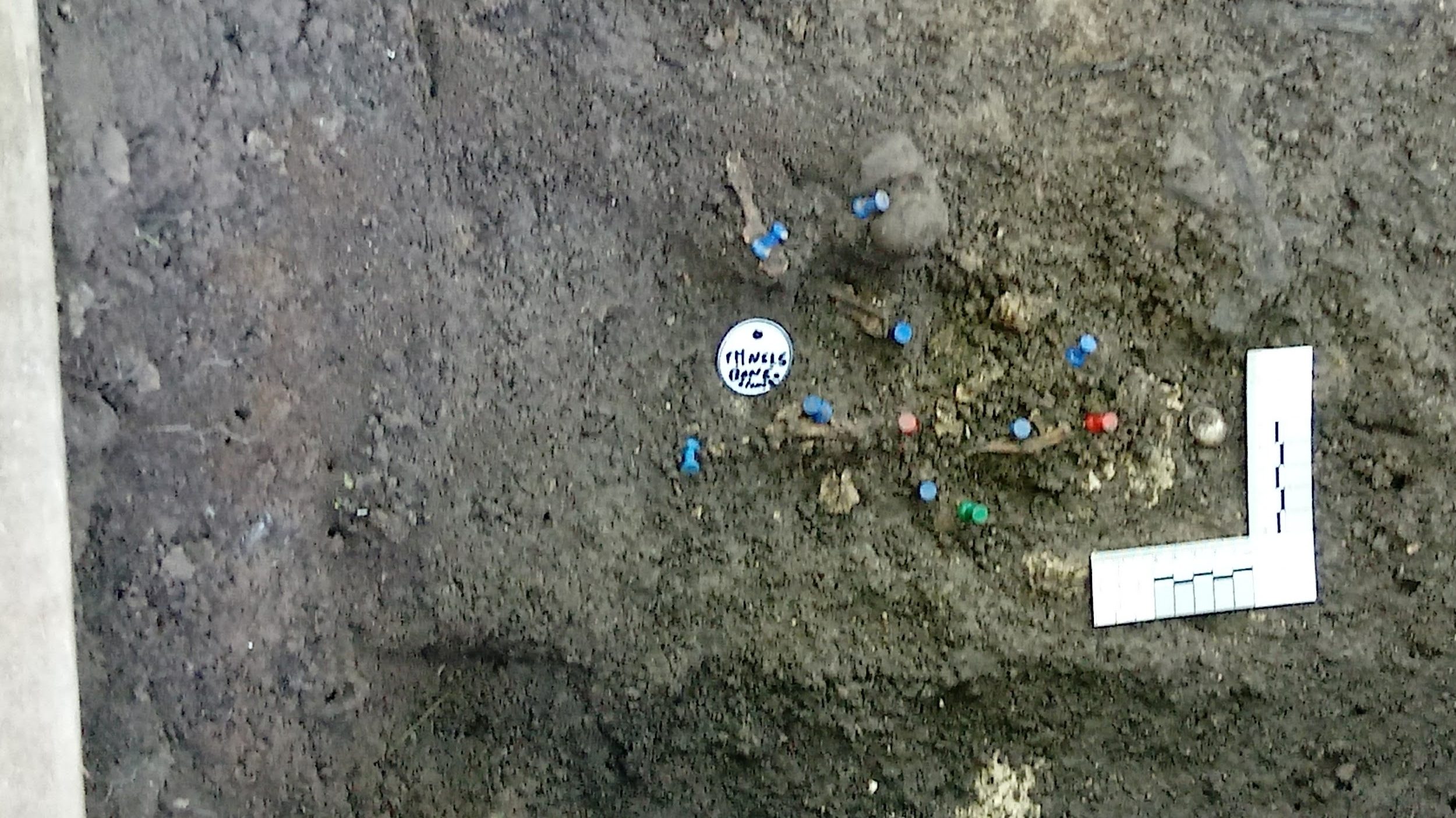Week two has come and gone and we have found some interesting things at Johnson’s Island. One of the excavators, Caitlyn, found part of a small animal skeleton that she named ‘Clarence’. However we could not find the skull that day. We initially thought the skeleton could have been a rat, but we weren’t entirely […]
Read full post »Archives for the ‘Field Reports’ Category
2017 Field Report 1
Monday, July 3, 2017
We started field school on Monday, June 5th with an introduction to who everyone was and what we were doing over the next five weeks. After that we watched a video on Johnson’s Island, called Rebels on Lake Erie, to give us some background knowledge of not only the site, but what went on there […]
Read full post »2017 Director’s Comments
Monday, June 26, 2017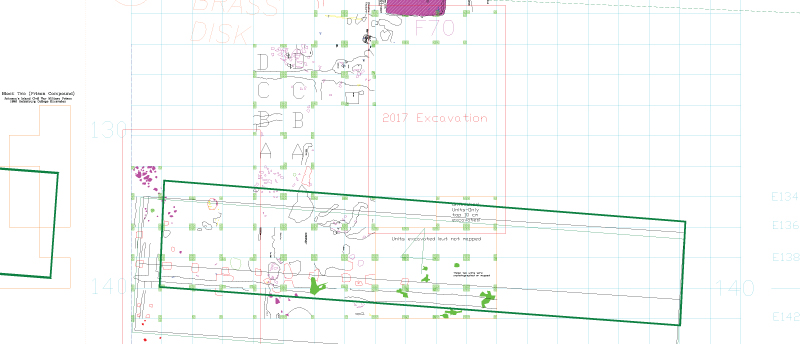
Comments from Dr. Dave Bush, Director of the Archaeological Investigation at the Johnson’s Island Civil War Prison Site. This is my 30th year investigating the Johnson’s Island Civil War Prison site. It is difficult to believe that I have spent so much time at just one archaeological site. Part of the fascination with this site […]
Read full post »2016 Field Report 4
Tuesday, July 12, 2016
The latrine is a valuable asset in our dig because there is so much we can learn from it and there are exciting artifacts to find. An important part while excavating the latrine is reconstructing the depositional history. The latrine is in an area where there has been little to no disturbance since the Civil […]
Read full post »2016 Field Report 3
Friday, July 8, 2016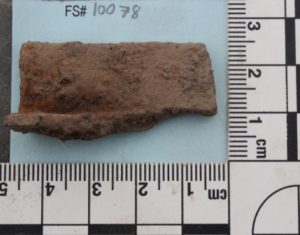
Over the past 3 weeks we have found many Field Specimens (FSs) which we defined in a previous article. We discover FSs while we are excavating or while screening through the soil. On Johnson’s Island we find artifacts from not only the Civil War, but from past Native Americans use. Getting to see each item […]
Read full post »2016 Field Report 2
Thursday, June 23, 2016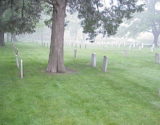
The Johnson’s Island Confederate Cemetery contains approximately 230 Confederate Officers and enlisted that died while imprisoned at the island. During the Civil War, the prisoners who were either executed, died from illness or some other cause, were buried in the cemetery. When a prisoner died, his companions or fellow prisoners would carry them down to […]
Read full post »2016 Field Report 1
Tuesday, June 21, 2016
Monday, June 6, was the first day of this year’s field school! It consisted of orientation at both the Heidelberg University Archaeology lab and the prison site on Johnson’s Island. In the lab, we learned how to identify and wash artifacts, while keeping them all properly sorted by provenience (their precise location). After becoming familiar with […]
Read full post »After the Field: Laboratory Analysis
Monday, July 6, 2015
At the Center for Historic and Military Archaeology, Heidelberg University Although working in the field is a major component of archaeology, lab work comprises the majority of an archaeologist’s time. The lab is where everything comes together, be it analysis, background research, or actual artifact refitting. There are a multitude of tasks done in the […]
Read full post »Feature Discovery and Identification, Recording, and Excavation
Thursday, July 2, 2015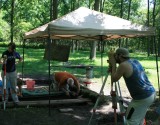
One of the many things that take place during our field school is the excavation, discovery, identification and recording of features. Features are identified during the course of excavation at Johnson’s Island Civil War Prison. A feature is an identifiable variation or change in the soil involving color, composition or texture. These can be identified […]
Read full post »The Glass of Johnson’s Island
Wednesday, June 24, 2015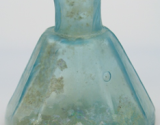
While digging in the majority of our units, the most obvious artifacts are typically pieces of glass, both large and small. The sheen of the glass in the sunlight illuminates it and separates it from the rest of the soil. Whether the color of the glass is dark green, amber, light green, or clear when […]
Read full post »How to Open and Set Up New Units for Excavation
Thursday, June 18, 2015
Director’s Note: Every unit we open up is tied to the overall site grid that was established back in 1989. There are several brass plate permanent datum points cemented into the ground. From these we place stakes along the grid in the areas we wish to investigate. As noted, we are set up to explore […]
Read full post »FS-ing Artifacts at Johnson’s Island
Tuesday, June 9, 2015
As we excavate, part of our job is to screen buckets of soil for artifacts. Normally, the artifacts we find are set off to the side in trays to be counted and bagged at the end of the day. However, if something is unique or especially nice, it is FS’d. FS stands for “Field Specimenâ€, […]
Read full post »Summary of Research Design for 2015
Wednesday, June 3, 2015
This season, our intention is to revisit the Prison Hospital, Block 6. In previous years (2006-2009), we had excavated the majority of the main hospital building, but did not investigate the extension on the northern end. We decided to focus on that extension for part of this season’s work. We are particularly interested in determining […]
Read full post »2014 Field Report 4
Tuesday, July 29, 2014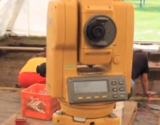
In this video update from Johnson’s Island, we are using the Total Station to map out features for evidence of where Block 8 used to stand. Watch to learn more!
Read full post »2014 Field Report 3
Tuesday, July 22, 2014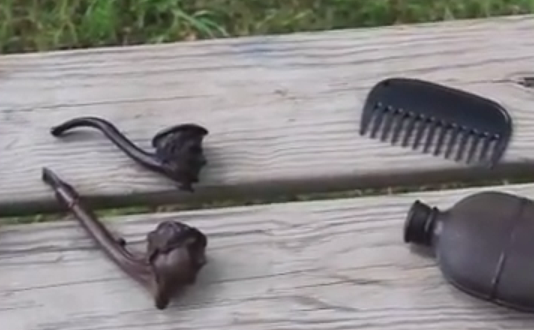
In our latest video field update, history expert Mike Woshner tells us about the use of hard rubber in the mid-19th century.
Read full post »2014 Field Report 2
Tuesday, July 15, 2014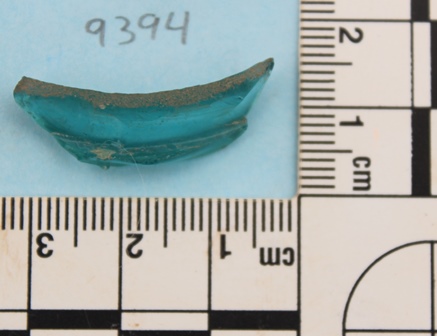
All the below Field Specimens (FS) were discovered during the excavations of Block 8. We are slightly north of the center of the Block. FS 9394-Aqua Green Canning Jar Rim Fragment This fragment exhibits a cracked off rim finish. These jars were patented in the late 1850s. FS 9395 and FS 9397-Hard Rubber Chain Links […]
Read full post »2014 Field Report 1
Friday, July 11, 2014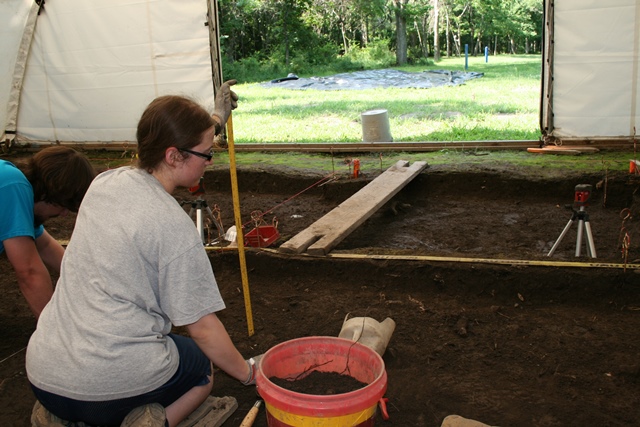
Watch our latest video report from the field and see what the 2014 field school students are doing at Johnson’s Island!
Read full post »2013 Field Report
Monday, June 17, 2013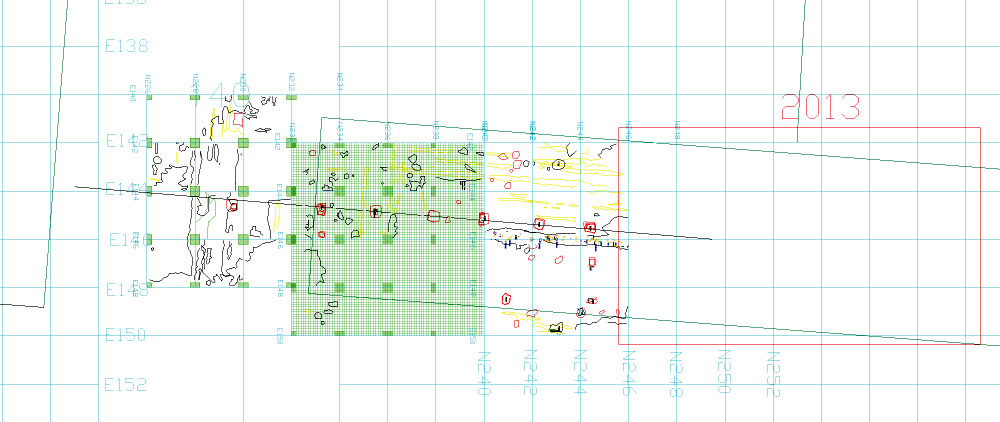
We are very excited about this year’s students and our research goals. We are working the soils directly beneath Block 8, and we are positioned approximately in the middle of the block this year. The latrine (sink) being excavated weathered the winter well, and we will begin excavations into the northern portion of this feature […]
Read full post »2012 Field Report
Tuesday, August 14, 2012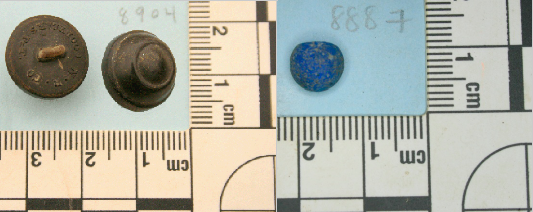
Coming from a variety of different universities and backgrounds, the students of the 2012 Johnson’s Island field school through Heidelberg University have now been excavating the Johnson’s Island Civil War Prison site for two weeks. The 11 students have been divided into four groups, each responsible for excavating a specific unit of the site. This […]
Read full post »2012 Johnson’s Island Civil War Prison Research Goals
Monday, July 30, 2012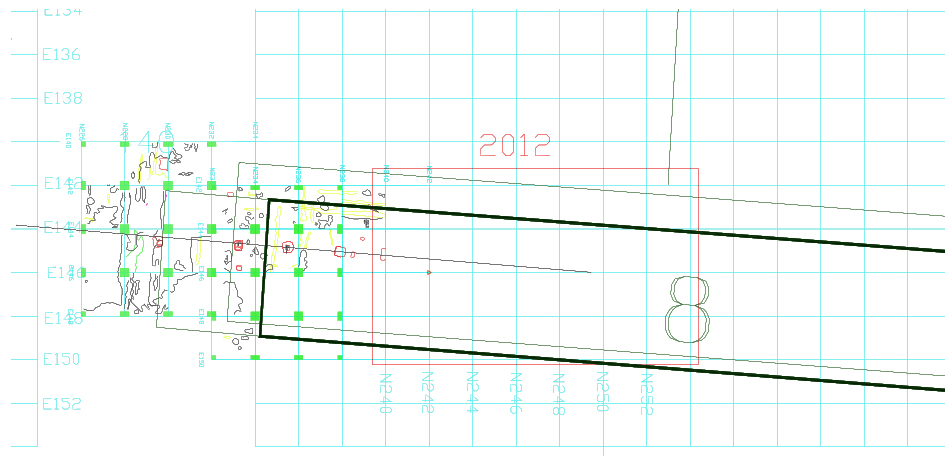
The 2012 Archaeological Study of the Johnson’s Island Civil War Prison Site By David R. Bush, Ph. D., Heidelberg University This year the archaeological study of the Johnson’s Island Civil War Prison site continues with the exploration of Block 8. There are two areas of Block 8 under investigation. This is the third year for […]
Read full post »2011 Field Report 2
Monday, August 1, 2011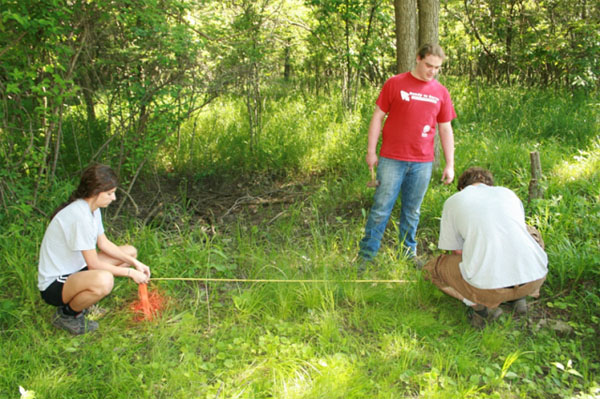
The Fundamentals of Opening a Unit Before excavations begin, a unit must first be surveyed and located. This week, we opened two units above the location of one of the latrines associated with Block 8. We set up a total station (also known as a theodolite and an electronic distance measurer) which is used to […]
Read full post »2011 Field Report 1
Thursday, June 16, 2011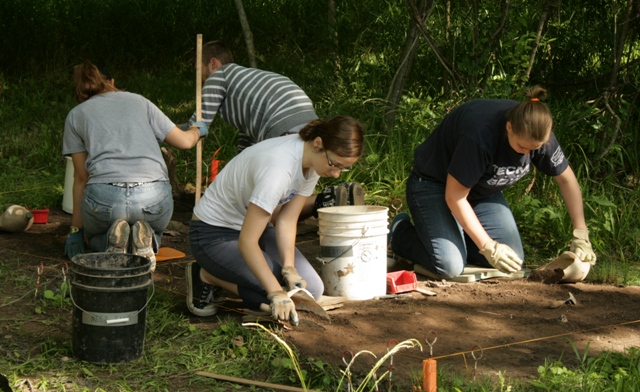
Life in Block 8 The following was prepared by the students participating in the excavations at the Johnson’s Island Civil War Prison site this summer as part of the Heidelberg University Archaeological Field School. Since they are excavating within the former location of Block 8, they have decided to present some historical information on life […]
Read full post »2010 Field Report 7 – Educators Contributions
Tuesday, July 27, 2010
The following were put together by the various grade school and high school teachers participating in the graduate education course at Johnson’s Island. Groups of three or four students had the assignment to prepare one topic to include on this web site. Here are their contributions. Screening By: Niki Schiefer, Miranda Hessick and Kendra Foos […]
Read full post »2010 Field Report 6 – Mapping
Thursday, July 8, 2010
Our group, that being group D, and all the others have been mapping all features and artifacts located in-situ in our units and the latrine. The purpose of mapping both features and artifacts is to record the provenience and context within that unit. Mapping requires the following tools: a tripod, total station, plumb bob, level, […]
Read full post »2010 Field Report 5 – Lab Work
Saturday, July 3, 2010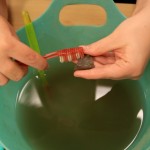
by Zoe van Buren, Jana Irving, Leslie Salyers, Field School Students            An essential component of any archaeological excavation is the processing of the artifacts. Once a week, our class meets in the archaeological lab at Heidelberg University to sort, clean, and label the materials we have excavated from our units. We begin with a […]
Read full post »2010 Field Report 4
Thursday, June 24, 2010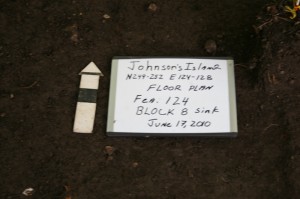
From the 2010 Archaeological Field School Participants: The Block 8 Latrine is a perfect example of how a new archaeological site is begun. After the latrine was located through soil samples, the site was staked out within an existing grid system and we continued to investigate. Members of the excavation teams worked to clear away […]
Read full post »2010 Field Report 3
Thursday, June 17, 2010
From the 2010 Archaeological Field School: Having arrived and settled in, the Johnson’s Island archaeological field school began on  Monday, June 7th.  We met at the Gilmor Science Building archaeological laboratory where we had a short lecture introducing us to the history and context of the site.  Johnson’s Island was used as the location for […]
Read full post »2010 Field Report 2
Friday, May 21, 2010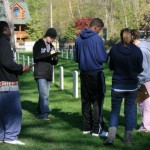
by David Bush, Ph.D. It is my privilege to share one school’s experience at the Johnson’s Island Civil War Prison. The Lorain County Early College High School brought four classes to the Johnson’s Island Civil War Prison site in April, 2010 through Heidelberg University’s Experiential Learning Program in Historic Archaeology. Their teacher, Mark Jaworski (Lorain […]
Read full post »2010 Field Report 1
Monday, May 17, 2010
Investigations at the Johnson’s Island Civil War Prison Site by Dr. David Bush This year, our investigations are centered on Block 8 within the Prison Compound. Block 8 was one of the 11 housing blocks used solely for holding the Confederate officers incarcerated at Johnson’s Island. In addition to the 11 general housing blocks, Block […]
Read full post »2009 Field Report 6
Monday, July 20, 2009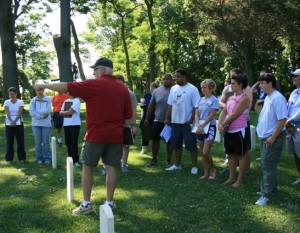
The following update was prepared by the 18 teachers that were enrolled in two graduate education courses at Heidelberg University geared towards utilizing the Johnson’s Island Civil War Prison archaeological study for middle school and high school use. They were asked just to present some aspect of the experience for the AIA readers. I hope […]
Read full post »2009 Field Report 5
Tuesday, July 14, 2009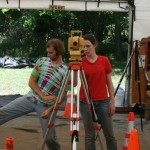
Very. Small. Rocks. In the beginning, it all looked the same. Bucket after bucket, screen after screen, a seemingly endless supply of very small rocks filled our working days. But as we approached the end of that first week, we began to look into those screens from a new perspective. It was not simply a […]
Read full post »2009 Field Report 4
Thursday, July 2, 2009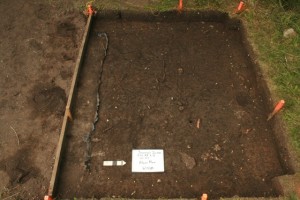
Our excitement this week has been narrowly focused on feature 40, the latrine. Although we do find important items in the hospital block, in feature 40 we are presented with a unique opportunity. We know the exact dates that this latrine was in use, affording us a snapshot in time of the everyday life of […]
Read full post »2009 Field Report 3
Friday, June 26, 2009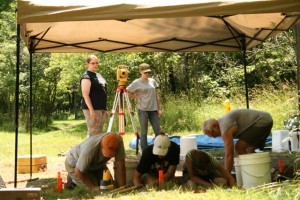
Text and photos by the students of the field school Historical archaeology, like archaeology in general, must focus on key aspects of research while maintaining meticulous documentation. In order to achieve this, multiple levels of technology are required. Low-tech resources such as trowels and shovels are as important as more sophisticated tools such as digital […]
Read full post »2009 Field Report 2
Friday, June 19, 2009![[image]](https://interactive.archaeology.org/johnsons/fieldreports/images/19june09_1.jpg)
Bags unpacked, refrigerators stocked, trowels and plums in hand… The 2009 Heidelberg University Archaeological Field Crew is in the house! Like surfers in search of the perfect wave, we arrived this past week from distant, and not so distant places, from California and Oklahoma, Wisconsin, Michigan, and Ohio, drawn here by the perfect dig, a […]
Read full post »2009 Field Report 1
Wednesday, June 17, 2009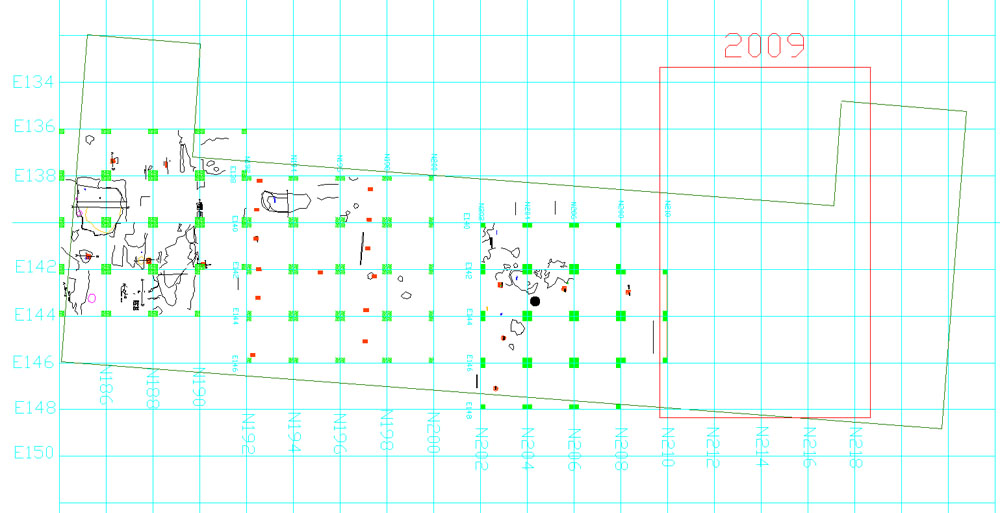
This year we have a very diverse group of students in the Heidelberg University field school. They come from all ends of the country and have quite a varied background. The first week we worked on the interior of Block 6. We will be continuing this part of the excavation throughout the summer. We have […]
Read full post »2008 Field Report 5
Monday, July 21, 2008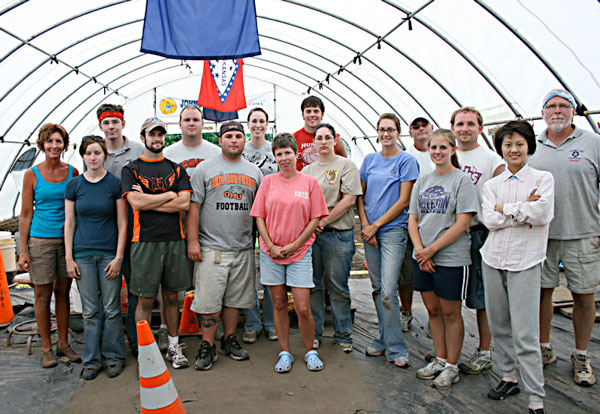
by the 2008 Archaeology for Educators Field Crew Currently, a group of Heidelberg College graduate students is participating in a class titled “Archaeology for Educators.” We are continuing the work at Johnson’s Island Prisoner of War Depot, excavating in two main areas: part of the hospital block and one of the hospital’s latrines. Drs. David […]
Read full post »2008 Field Report 4
Saturday, July 12, 2008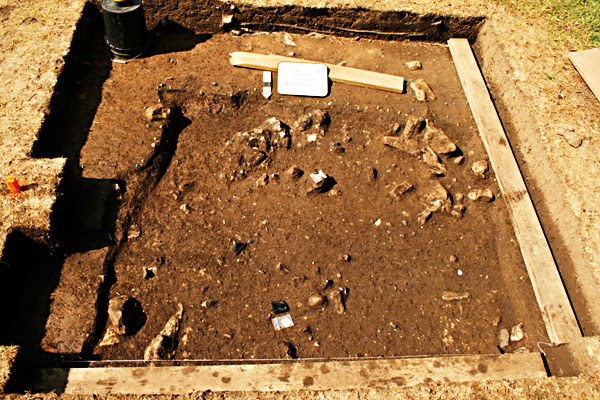
by the 2008 Heidelberg College Archaeological Field Crew This week marked the end of our time here at Johnson’s Island, and we were very busy both in the latrine and in the hospital. At the end of last week, we spent most of the morning braving the elements while trying to keep the site dry. […]
Read full post »2008 Field Report 3
Thursday, July 3, 2008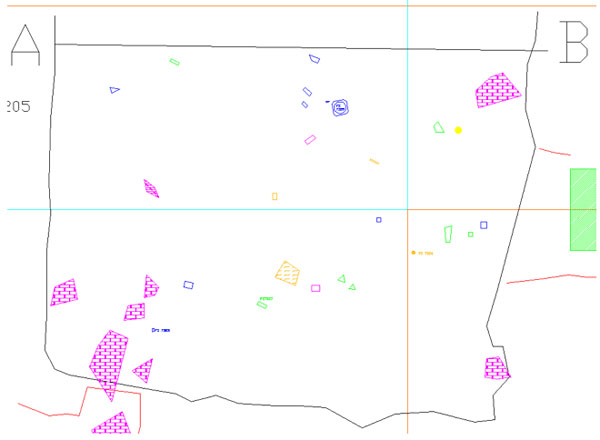
This week we continued our excavations in Block 6 and the latrine. Because of rainy weather on Monday, we focused our efforts on the hospital units which are sheltered. We were able to work in both areas on Tuesday. The excavation in the latrine has produced many pieces of glass, ceramic, and bone. We have […]
Read full post »2008 Field Report 2
Monday, June 30, 2008
This past week we have been rotating between excavating some of the Hospital Block units and the newly opened latrine (Feature 40). As we continued working in Block 6, the Hospital Block, we excavated down to the subsoil, which is much lighter colored soil than that of the plow zone, which is soil that has […]
Read full post »2008 Field Report 1
Thursday, June 19, 2008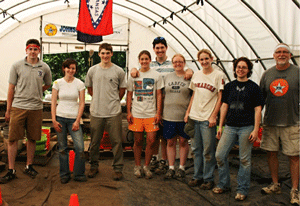
We began last week working in Block 6, the prison hospital. Our work was centered in 2 by 2 m units in the middle of the hospital. The hospital had wooden plank floors, so we expected to find only objects that would have fallen through. During excavation and screening, we discovered both historic artifacts–such as […]
Read full post »Field Report Introduction 2008
Tuesday, June 10, 2008
Once again we began our investigations at the Johnson’s Island Military Prison Site at the end of March with the Experiential Learning Program in Historic Archaeology through Heidelberg College. This is the third year we have been working on the Prison Hospital-Block 6. Our work is centered slightly to the east and north of the […]
Read full post »2007 Field Report 5
Sunday, July 29, 2007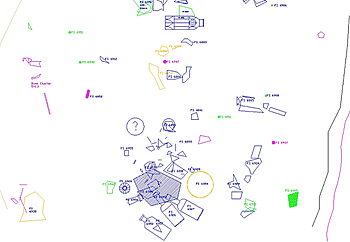
We have been working quite hard this summer to investigate Feature 41, the prison hospital latrine from 1863, and have taken many interesting things out. I wanted to share with you these new discoveries at Johnson’s Island. We have found so much eggshell that I can’t even imagine how many eggs it must represent. I […]
Read full post »2007 Field Report 4
Monday, July 9, 2007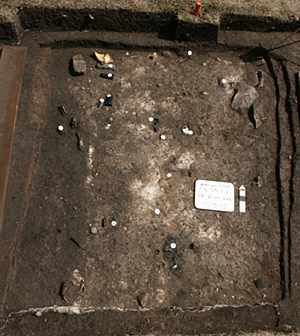
Over the last week, we began excavating the third level of the hospital latrine, bringing the latrine down to about 12 cm below the plow zone (actually to 61-64 cm below temporary datum!). At this depth, we are finally breaking through the clay that was placed on top of the waste to seal it. We […]
Read full post »2007 Field Report 3
Monday, July 2, 2007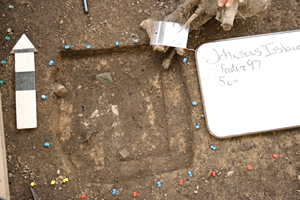
Over the past two weeks, we’ve been alternating between opening up the hospital latrine and finishing the units inside Block 6. We’ve mapped and excavated a number of potential postholes and wall supports inside the hospital area. Completion of the four units there has exposed more details of the floor plan as well as a […]
Read full post »2007 Field Report 2
Sunday, June 24, 2007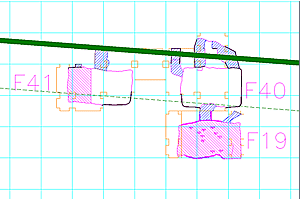
We are now investigating Feature 41 (F.41), the 1863 latrine from Block 6 at the site, and I thought I would give you some background on the excavation of it. As you can see from the plan map, we found three latrines in 1995 and 1996, all inside of the original wall for the prison. […]
Read full post »2007 Field Report 1
Tuesday, June 19, 2007
For the first week of excavating in the prison hospital, we divided into two teams of four working in two 2 m2 units excavating the plow zone, the upper level of soil, disturbed by plowing but still containing artifacts. Our most common finds included nineteenth-century ceramics and glass, cut nails, brick, and flint pieces (from […]
Read full post »Field Report Introduction 2007
Friday, June 1, 2007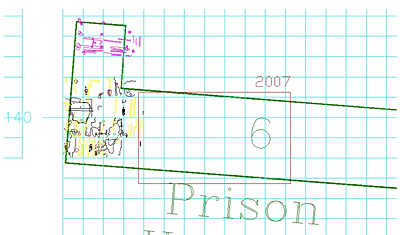
We have started another field season at the Johnson’s Island Civil War Prison site and are hopeful to gather quite a bit of information about the hospital. Our goals this year are two-fold. First, we want to continue our exploration of the actual building site for the hospital. Second, we want to open up one […]
Read full post »2006 Field Report 6
Friday, July 21, 2006
To date, we have excavated 14 two-meter squares at the Prison Hospital, Block 6. We have discovered several postholes and one large feature with brick and mortar, possibly the foundation area to the chimney on the southern side of the block. The postholes on the eastern side appear to represent 8″ square support posts just […]
Read full post »2006 Field Report 5
Sunday, July 9, 2006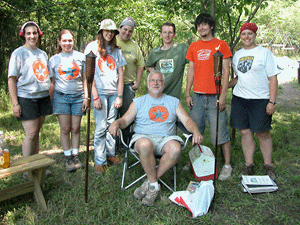
The Heidelberg College Field School is now over, but we had a wonderful time exploring the prison hospital over the past few weeks. I still have several weeks of research yet ahead of me, so I am not done updating everyone on our experiences. Today, I will share a few of our findings that have […]
Read full post »2006 Field Report 4
Saturday, July 1, 2006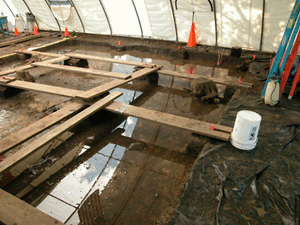
This update is being provided by the students of Heidelberg College’s Archaeological Field School 2006.–Dr. Dave Bush In the past two weeks, we have recovered numerous artifacts that merit further attention. However, our efforts were hampered by several days of flooding in the excavation units. The deeper units were filled with several centimeters of water […]
Read full post »2006 Field Report 3
Friday, June 16, 2006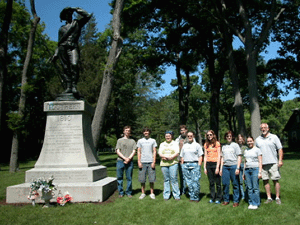
This update is being provided by the students of Heidelberg College’s Archaeological Field School 2006. I hope that you appreciate their perspective in what in most cases is their first experience in archaeological fieldwork. I have enjoyed these students the first week and look forward to a great summer with them.–Dr. Dave Bush This is […]
Read full post »2006 Field Report 2
Thursday, May 18, 2006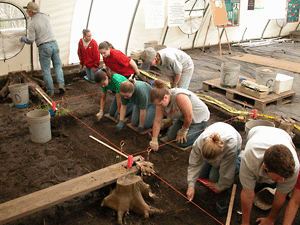
It has been another two weeks since our last update. In that time, we have continued to excavate at the location of the southern end of Block 6, the Johnson’s Island Civil War Military Prison site’s Prisoner Hospital. We have continued to discover hundreds of artifacts related to the medical treatment of the prisoner. The […]
Read full post »2006 Field Report 1
Wednesday, April 26, 2006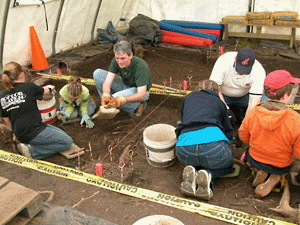
Excavations at the Prison Hospital (Block 6) of the Johnson’s Island Civil War Military Prison site have been ongoing since March 28. The Experiential Learning Program in Historic Archaeology through Heidelberg College has provided the student power that has resulted in the excavation of four 2 by 2 meter squares. Thus far we have had […]
Read full post »Field Report Introduction 2006
Saturday, April 15, 2006![[image]](https://interactive.archaeology.org/johnsons/gifs/field3.gif)
The investigations of the prison hospital (Block 6) are a continuation of work began in 1990. I first explored the hospital’s latrines as part of a larger exploration of latrines from several different locations within the prison compound. This research, which focused on Blocks 1, 6, and 8, demonstrated that each localized use resulted in […]
Read full post »2002 Field Report 5
Tuesday, July 30, 2002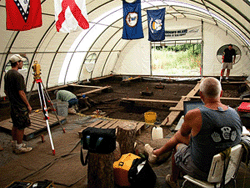
The field season is winding down, but we still have many questions about the area in which we have been working. We have now mapped in all the exposed features, giving us some details about the ground disturbances. The pictures to the left are of us conducting the mapping. The exposure of a trench running […]
Read full post »2002 Field Report 4
Tuesday, July 2, 2002![[image]](https://archive.archaeology.org/online/features/johnsons/thumbnails/feature1.gif)
Our field investigations have continued with various groups participating in the study of Block 4. We have now opened 16 two-meter units and have eight of them down to subsoil. Participating with us were students from the Cleveland Museum of Natural History’s Future Scientists Program and the Field School from Heidelberg College. Several features have […]
Read full post »2002 Field Report 3
Thursday, May 30, 2002
The weather has been more cooperative the past two weeks. The site is finally starting to dry out, and this has allowed us to work on all the units. Let’s hope we won’t be suffering from much more rain this year! Since the last field report, we have had fourteen new classes at the site. […]
Read full post »2002 Field Report 2
Wednesday, May 8, 2002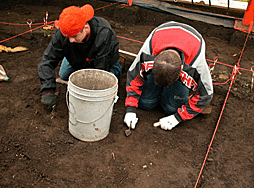
Thousands of artifacts have been recovered so far this spring. We have had 25 classes participate in our Experiential Learning Program, giving more than 500 students the opportunity to help discover the history of Block 4 at the Johnson’s Island Prison Compound. Students excavate Unit B Screening for artifacts Our findings have included over 200 […]
Read full post »2002 Field Report 1
Sunday, April 21, 2002![[image]](https://archive.archaeology.org/online/features/johnsons/thumbnails/map.gif)
Our interactive dig’s first report from the field! Map shows Block 4, the area where we are working this year. The grade- and high- school students in our Experiential Learning Program use the letter designations on the two-meter units to keep track of the ones they are investigating. It’s the third year we’ve been excavating […]
Read full post »
